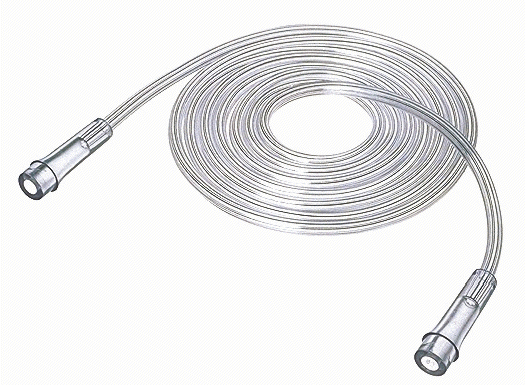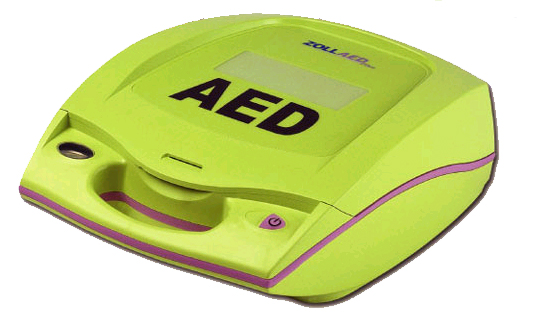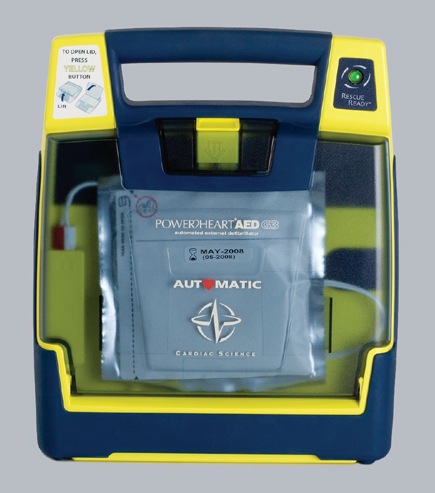
Here's a quick look at what we need and what
we have. Seems
like a lot at first doesn't it? Scroll over each item and click to learn more about
each item - plus there's instructional videos in several sections.
(Back to index page)
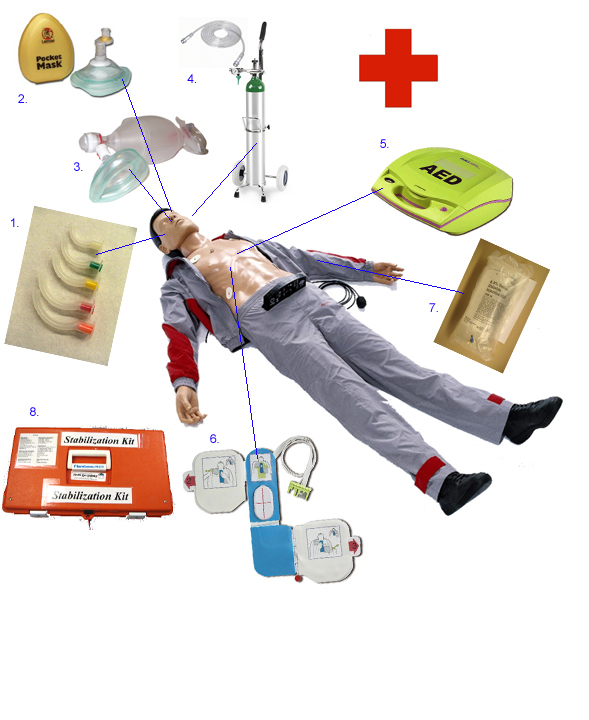
Familiarize yourself with where the supplies / emergency kits are located. (And the 02,tubing,
masks and tubing, saline, IV rack, all that good
stuff. For instance, you can see in the eh following picture
a bag mask, the AED on the wall, right by the BPC-UC supply room with most all of our emergency stuff:
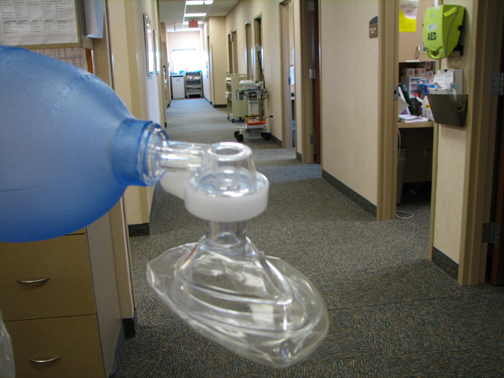
Breathing Pocket mask: |
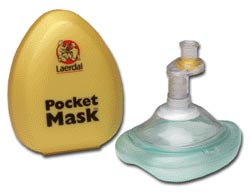 |
Andover has a Pocket mask on the cupboard to your right at eye level as you come into the nursing station. In a BLS/CPR situation you give: |
And here's how it works: getting a firm tight seal over and around the patients nose and maintaining a protective barrier between you and the the patient is key. Note the gloves. Universal precautions - i.e. gloves, masks, protective barriers - always assumed present but easily forgotten in these situations. Get into practice gloving and protecting yourself. |
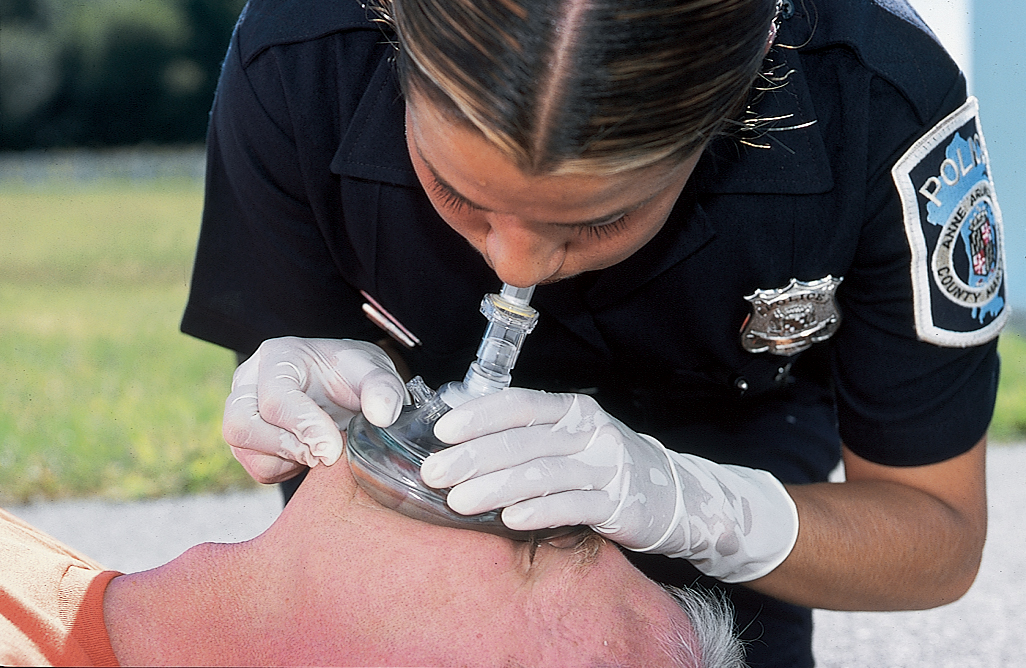 |
Using the Pocket Mask
One Person use of the Pocket Mask
and CPR Breathing
More Breathing |
Our bag valve masks (BVM) at both BPC and APC are in the Stabilization Kit. There are other BVM's in various places in the clinics. The more you're aware of where they are, the smoother everything goes. Yehaa! :-) For adults 2 breaths every 30 compressions. Infants and children (under aprox. 8 years old): 2 breaths every 15 compressions. |
 |
|
Note the "E -C grip": the "E" is the middle, ring and little finger grasping the the margin of the mandible. The "C" is the C-shape formed by thumb and index finger gripping the mask. This takes practice to get a good seal! |
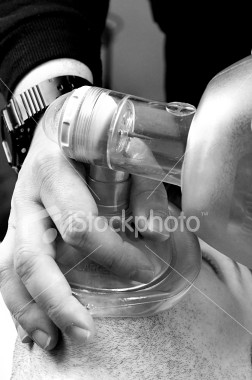 |
Another view of a bag valve mask showing where your hands ought to be, the attached oxygen and the...can you guess? The "E-C Grip" :-) For adults 2 breaths every 30 compressions. Infants and children (under aprox 8 years old): 2 breaths every 15 compressions. |
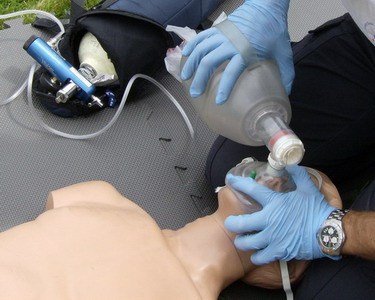 |
|
This should be getting E-Z by now: i.e. the E-C grip. Open 02 to 12 -15 liters. Yep, it'll be blowing hard.
|
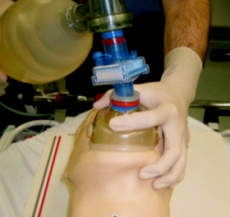 |
| Airway |
| Oropharyngeal Tubes | |
You can find oropharyngeal airways in the stab kit. Use these for difficult airways. What's a difficult airway? One where the patient's tongue is in the way, the mouth - even when the neck is extended - is difficult to keep open, etc. Sizes are measured by opening of mouth to corner of the mandible. (When used they are NOT intubation but rather an adjunct to airway control. |
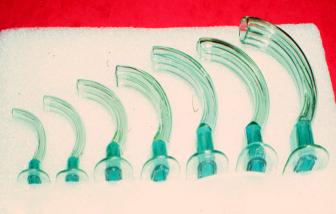 |
|
We all know the stab kits. Yep, awfully pared down from the old crash carts. Clinicians (and anyone who'll be be involved), make sure you're familiar with contents. Scroll down to see a list of the contents and their usages / doses . |
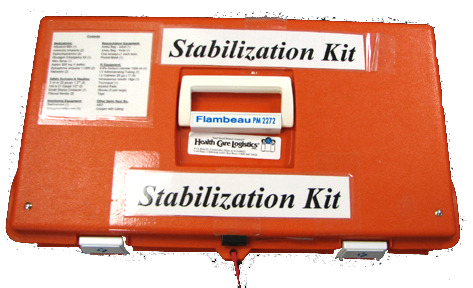 |
| Clinicians (and anyone who'll be be involved): make sure you're familiar with contents :-) . | 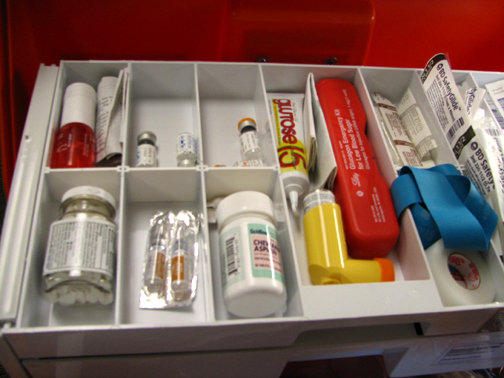 |
| So what's in the stabilization kits? | |
|---|---|
In the upper drawers: aspirin |
| Breathing: Oxygen and tubing |
| Attach tubing to bag valve mask, attach oxygen and - open to 12 -15 liters and repeating the obvious: tubing attached. | 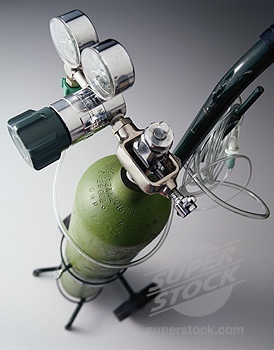 |
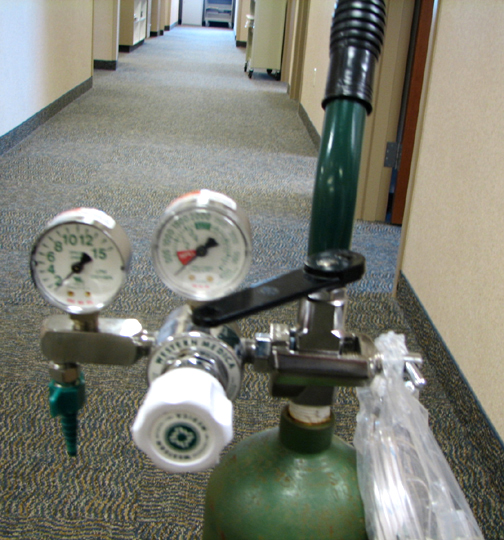 |
Get familiar with those confusing valves !
|
To the right is one of our Brooklyn Park 02 tanks. (He volunteered heroically for this photo op.) Tubing is attached. Note the International green color signifying Oxygen. Again, for adults 2 breaths every 30 compressions. Infants and children (under aprox 8 years old): No 02, no brain. To wit:
|
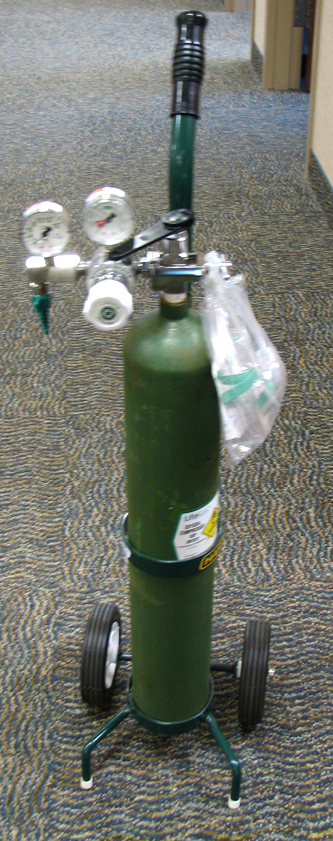 |
We use Zoll Medical defibrillators at Brooklyn Park, and
Cardiac Here's a picture of the Zoll model.
And just below that the Cardiac Science
As promised: the Cardiac Science AED:
|
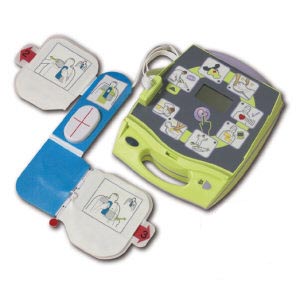 |
Open up the Zoll AED and you have the pads and the wiring. I was a little confused the first time I opened this package. It's simple and straight forward once you've walked through opening one of these things (well ok, it took me more than once). But it all sounds so simple -- until you're in that code situation and you're scared to death you're going to do something wrong. There's an on / off button. Turn it on. (Some self activate when opened. Ours do not. The pads again, were a little tricky the first time I saw them. Scroll down for a closer look at how they're applied and watch the video just below for a realy good overview. The Cardiac Science AED demo is just belwo that. Link to Zoll Medical |
Here's Zoll Medical's Manufacturer Demo
And here's the Cardiac Science
|
Defibrillation Pads |
The AED Pads
(back to top)
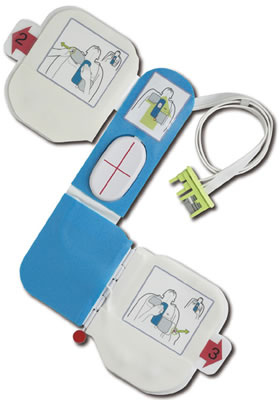 |
A little better look at the pads... scroll down a little farther and you'll see how they're applied to the chest... check out the padded target for the heels of your hands. Also, you can see how they're applied in the Zoll video just above. If you scroll down a little farther there's another video showing how conventional pads are applied. |
| A picture speaks a thousand.... | |
Here's a video showing the application of the more common type of defibrillation pads:
|
|
Circulation Adjuncts: Saline and fluids |
| Saline is in the Stab. kit. If we can get a line in, awesome! If there's only 2 or 3 people, we shoot for doing as much as we can before the ambulance arrives. | 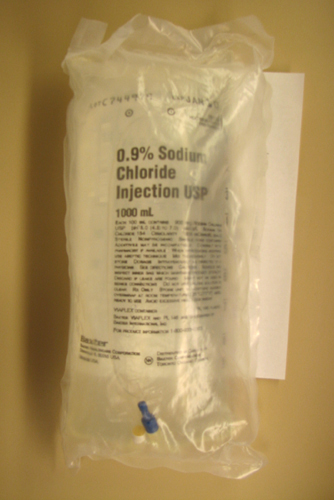 |
Saline / fluids
